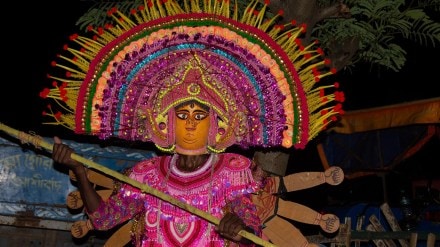Odisha’s offbeat tribal districts, predominantly home to indigenous tribes, open up a world vastly different from the usual tourist trails in India. With lush forests, rugged hills, vibrant markets, and age-old customs, Odisha’s tribal belt beckons explorers, cultural enthusiasts, and anyone seeking an authentic experience in rural India.
Unveiling the Tribal Culture and Lifestyle
The tribal regions of Odisha, especially areas in Koraput, Rayagada, Malkangiri, and Nabarangpur districts, are home to over 60 indigenous tribes. The most prominent among them include the Bondas, Gadabas, Didayis, Dongria Kondhs, and Santals. Each of these tribes boasts distinct languages, attire, customs, and ways of life. The tribal people have a close bond with nature, which is reflected in their rituals, music, art, and even their agricultural practices.
Tribal markets, locally known as haats, are a colorful spectacle where people from various villages gather to trade goods, socialize, and even dance and sing. Some of the notable markets include the Onukudelli market of the Bondas, known for its lively atmosphere and rare handicrafts. Travelers visiting these markets can witness the indigenous people in their traditional attire and unique jewelry, gaining insights into the deep-rooted cultural ethos that characterizes these communities.
Architectural Marvels and Tribal Art
Odisha’s tribal belt is also renowned for its impressive forms of tribal art and architecture. Tribal homes, built using locally available materials like mud, wood, and thatch, are often decorated with intricate motifs and designs. The Saura and the Gond tribes are particularly known for their wall paintings, which depict scenes from everyday life, myths, and folklore. This traditional art, known as Saura art, uses a limited color palette, creating a style that is both minimalistic and expressive.
Handicrafts like the Dokra metal crafts and elaborate jewelry, made using natural materials like seeds, stones, and metals, are sought-after souvenirs that showcase the artisanship of Odisha’s tribal communities. The tribal belt’s art forms have garnered international recognition, drawing art enthusiasts from across the world to Odisha.
Natural Attractions and Scenic Landscapes
The tribal belt of Odisha is also rich in natural wonders, making it a paradise for eco-tourists and adventure seekers. The Eastern Ghats, with their undulating hills and dense forests, provide a stunning backdrop for treks and wildlife exploration. Waterfalls like Duduma, Khandadhar, and Barehipani cascade through the green terrain, offering scenic spots for relaxation and nature photography.
The Deomali hills, Odisha’s highest peak, located in the Koraput district, is a hotspot for adventure enthusiasts. It offers breathtaking panoramic views and is ideal for trekking, rock climbing, and bird-watching. Additionally, the lush forests are home to diverse wildlife species, including the rare and endangered Olive Ridley turtles, found in the nearby Bhitarkanika National Park.
Cultural Festivals and Tribal Celebrations
Festivals in the tribal belt of Odisha are an extravagant affair, filled with dance, music, and elaborate rituals. The annual Chaitra Parva festival, celebrated by the Koya and Kondh tribes, is a significant event where people gather to worship nature, perform traditional dances, and participate in folk songs and rituals. The Paraja tribe’s Mundia and Gadaba dance, along with the Bonda tribe’s Dhap dance, are highlights that showcase the tribal community’s vibrancy and artistic spirit.
Each tribe’s festival is a unique experience, providing visitors with a rare opportunity to engage with indigenous customs and learn about their spiritual connection with nature. These festivals serve as a reminder of the rich and enduring traditions that are preserved by Odisha’s tribal communities.
Sustainable Tourism: Protecting Tribal Heritage and Nature
As tourism grows in Odisha’s tribal belt, there is a pressing need for sustainable practices that protect both the environment and tribal heritage. Efforts are being made to promote eco-friendly accommodations, support local artisans, and encourage responsible tourism practices. Engaging in community-based tourism is a great way to contribute to the local economy while ensuring that the region’s unique culture and natural beauty are preserved.
The tribal belt of Odisha is more than just a travel destination; it is a journey into the heart of India’s indigenous communities and pristine landscapes. From the warm hospitality of the tribal people to the serenity of its mountains and forests, Odisha’s tribal belt promises an experience that is both humbling and exhilarating. For those with a spirit of adventure and a desire to understand a different way of life, the tribal heartland of Odisha awaits.
Disclaimer:
This article contains sponsored content that may not reflect the independent opinion or views of FinancialExpress.com. Further, FinancialExpress.com cannot be held responsible for the accuracy of any information presented here. Please consult a certified financial advisor before making any decisions based on this article.
